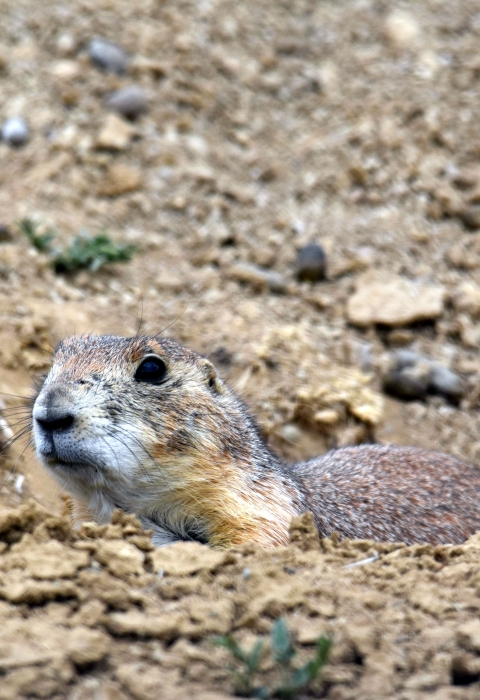Seasons of Wildlife
Spring is the time to watch for the return of American avocets, Wilson’s pharalopes, long-billed curlews and other nesting shorebirds around the lakes. The prairie is a stir with Cassin’s, vesper, lark, and grasshopper sparrows flitting above the grasses in search of food and nest sites. Listen for the ardent gobbling of wild turkey toms in the woodlots as they attract flocks of clucking hens. Spring and summer months bring the return of burrowing owls, migrating and nesting shorebirds, and several songbirds that are dependent on the short-grass prairie habitat.
Summer is a good time to visit the black-tailed prairie dog town and watch their antics. Listen for the sharp barks that mean a predator is near, your cue to scan the skies for hawks or even a golden eagle. Predators also approach along the ground so watch for prairie rattlesnakes, coyotes or badgers stalking the edges of the town.
October is a great time to visit. With a crisp breeze accompanying the migrating flocks of sandhill cranes, geese, and ducks, the refuge is alive with activity. Throughout autumn flocks of ducks, geese, and sandhill cranes blanket lakes and crop fields as they pass through on their annual migration. In the mornings, look for cranes and geese stretching their wings as they awaken from their overnight roosts on the lakes. During the day they fly out to feed on grain cultivated by the refuge. Each evening they return to the safety of the lakes. Autumn is a good time to practice identifying ducks, grebes and coots at a distance. Bring a scope or binoculars and observe the floats of ducks on refuge lakes.
Winter is one of the best times to observe majestic bald and golden eagles. As many as 60 bald eagles have wintered on the refuge, arriving late October to early November. The eagles alternately feed and rest at Stubblefield Lake and the refuge. Roost sites, open water, abundant waterfowl and fish on or near the Maxwell National Wildlife Refuge make it an attractive haven for wintering bald eagles. Historically the population peaks in February.


